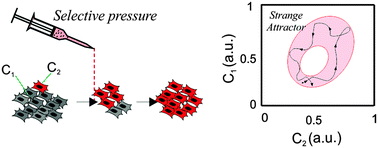Tumors as chaotic attractors
Abstract
Malignant tumor growth, progression and evolution share several of the features associated with strange attractors, a special type of dynamical behavior of non-linear systems. In this framework, the genetic instability of tumor cells represents a local-scale driving force for instability that lets the tumor evolve with time, while selective pressures discarding inefficient cell clones play the role of a dissipative process, providing the tumor with global stability and robustness with respect to perturbations. This setup induces global stability combined with local instability, and is in our opinion the real source of tumor robustness and plasticity, and ultimately the origin of the remarkable resistance of many tumors to anti-cancer therapies. A scientific program taking into consideration the vision of tumors as strange attractors requires the development of experimental and computational tools to link the micro- and mesoscopic perspectives of tumor biology. We here develop the idea of a tumor as a dynamical system, sharing characteristics with strange attractors and investigate several features of such systems, including: (a) local instability combined with global stability, a property inherent to the tremendous non-linearity of the biochemical regulatory circuits governing the individual fate and the interactions between tumor cells; (b) self-similarity at different levels; (c) and strong sensitivity to initial conditions in the composition and features of the tumor and its microenvironment.


 Please wait while we load your content...
Please wait while we load your content...